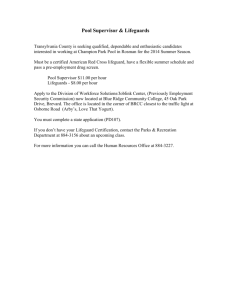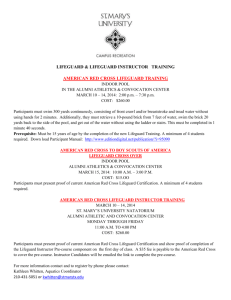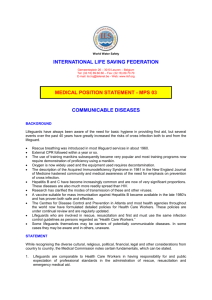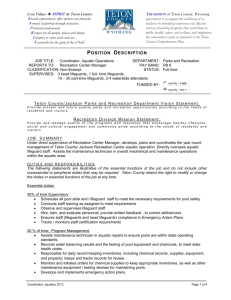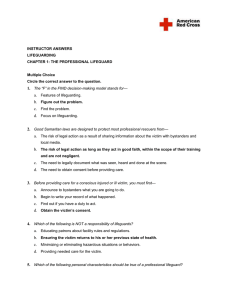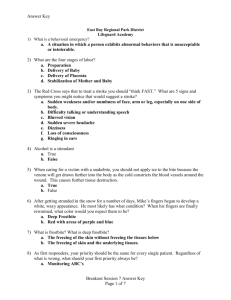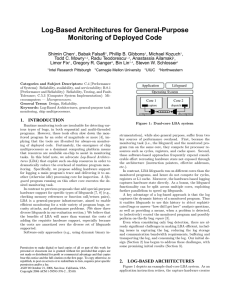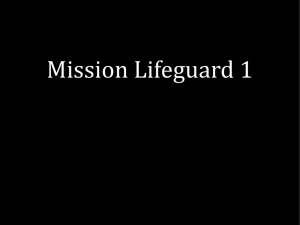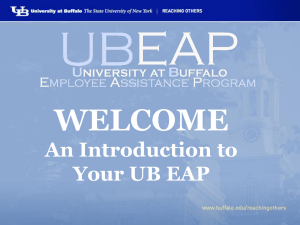Chapter-4-Teacher
advertisement
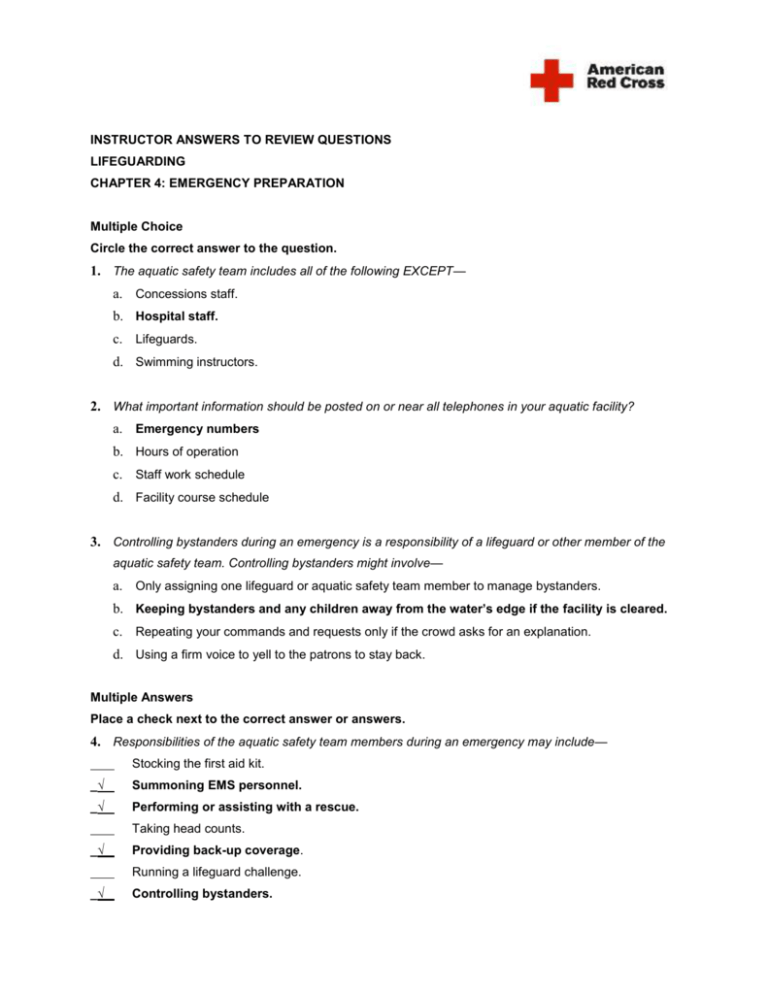
INSTRUCTOR ANSWERS TO REVIEW QUESTIONS LIFEGUARDING CHAPTER 4: EMERGENCY PREPARATION Multiple Choice Circle the correct answer to the question. 1. The aquatic safety team includes all of the following EXCEPT— a. Concessions staff. b. Hospital staff. c. Lifeguards. d. Swimming instructors. 2. What important information should be posted on or near all telephones in your aquatic facility? a. Emergency numbers b. Hours of operation c. Staff work schedule d. Facility course schedule 3. Controlling bystanders during an emergency is a responsibility of a lifeguard or other member of the aquatic safety team. Controlling bystanders might involve— a. Only assigning one lifeguard or aquatic safety team member to manage bystanders. b. Keeping bystanders and any children away from the water’s edge if the facility is cleared. c. Repeating your commands and requests only if the crowd asks for an explanation. d. Using a firm voice to yell to the patrons to stay back. Multiple Answers Place a check next to the correct answer or answers. 4. Responsibilities of the aquatic safety team members during an emergency may include— Stocking the first aid kit. _√ Summoning EMS personnel. _√ Performing or assisting with a rescue. Taking head counts. _√ Providing back-up coverage. Running a lifeguard challenge. _√ Controlling bystanders. _√ Clearing the pool or facility. Scheduling staff. True or False Circle true or false. 5. True False With guidance, bystanders can help during an emergency. 6. True False An EAP does not state who gets the equipment and how to get it to the injured victim because that is practiced during in-service training. 7. True False The EAP at a rural waterfront should factor in a longer response time than an aquatic facility in the middle of a city. 8. True False After a victim has received care and has been released to EMS personnel, lifeguards and other members of the safety team still have several tasks to complete. 9. True False The decision to reopen a facility following a significant incident may depend upon whether enough lifeguards are ready to go back to surveillance duty. 10. True False A lifeguard may not recognize that he or she is suffering from critical incident stress following a significant incident. 11. True False Following a significant incident, only lifeguards actually involved in the incident, management or a designated spokesperson should talk to the media or others about the incident. Fill in the Blanks 12. The goals of a staff debriefing are to— a. Examine what happened. b. Assess the effectiveness of the EAP. c. Consider new ways to prevent similar incidents in the future. d. Be alert for critical incident stress reactions. 13. A critical incident may cause a strong emotional reaction and hurt one’s ability to cope and function during and after the incident. Ordering Place the following in the correct order. 14. Place the ten steps of an EAP in the correct order. 6 Witnesses are interviewed. 3 The lifeguard follows the general procedures for emergencies that occur in the water or on land. 9 Corrective action taken. 5 The chain of command is notified. 8 Equipment is checked. 1 The lifeguard recognizes that someone needs immediate help. 4 Safety team members assist in the emergency. 2 The lifeguard activates the EAP. 10 Follow-up staff discussion. 7 Reports are completed. Circle the Correct Answer from the Pair 15. If EMS personnel take the victim to the hospital on the facility’s only backboard, the facility (may/may not) be reopened. Short Answer 16. What is an EAP? An EAP is a detailed plan describing everyone’s responsibilities in an emergency. 17. You are a lifeguard on surveillance duty at a waterpark. List three emergency preparation steps to consider in an EAP for waterparks. Answers should include any three of the following: o Stopping the waves or slide dispatch o Having set whistles signals, hand signals, flags or lights to communicate with other lifeguards o If another lifeguard is making a rescue, making sure that the lifeguard’s area of responsibility is covered. o In a deep water attraction, having all lifeguards stand in their chairs and adjust their zone coverage to cover the area of responsibility of the lifeguard making the rescue. o In a shallow water attraction, having a nearby lifeguard move to cover both his or her area of responsibility and the rescuing lifeguard’s area of responsibility. 18. List at least five common signals used to communicate during an emergency. Answers should include any five of the following: o o o o o o o Whistles Hand signals Public address systems Telephones Two-way radios Flags Megaphones 19. Following an emergency at your facility, after the victim has received care and has been released to EMS personnel, list at least four tasks you need to complete. Answers should include any four of the following: o o o o o o Notify the chain of command Complete reports Interview witnesses Check and replace equipment Reopen the facility Participate in a staff debriefing 20. List four situations that are considered critical incidents and may lead to health problems for lifeguards. o A patron’s death, especially the death of a child or a death following a prolonged rescue attempt. o An event that endangers the rescuer’s life or threatens someone important to the rescuer. o The death of a co-worker on the job. o Any powerful emotional event, especially one that receives media coverage.
